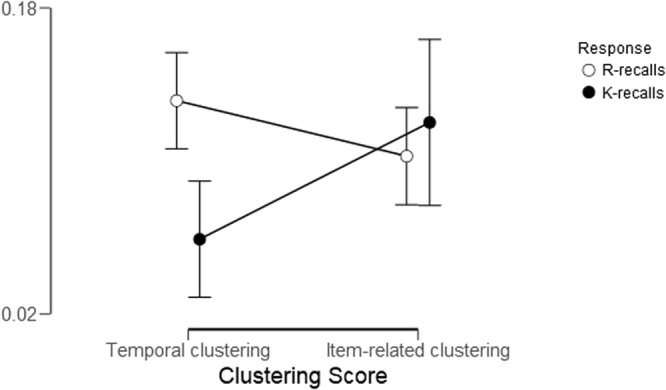Figure 1.

Recall dynamics’ scores for R- and K-recalls. Temporal-clustering scores denote the tendency to successively recall two items which were temporally-adjacent at study. Item-related-clustering scores measure the tendency of successively recalling two items which were given the same judgment at encoding (either ‘abstract’ or ‘concrete’). The measure of clustering scores is the difference between the raw clustering scores and the baseline scores, with a score of 0 representing chance. Thus, all clustering scores are significantly above chance level. Error bars represent 95% confidence intervals around the mean.
